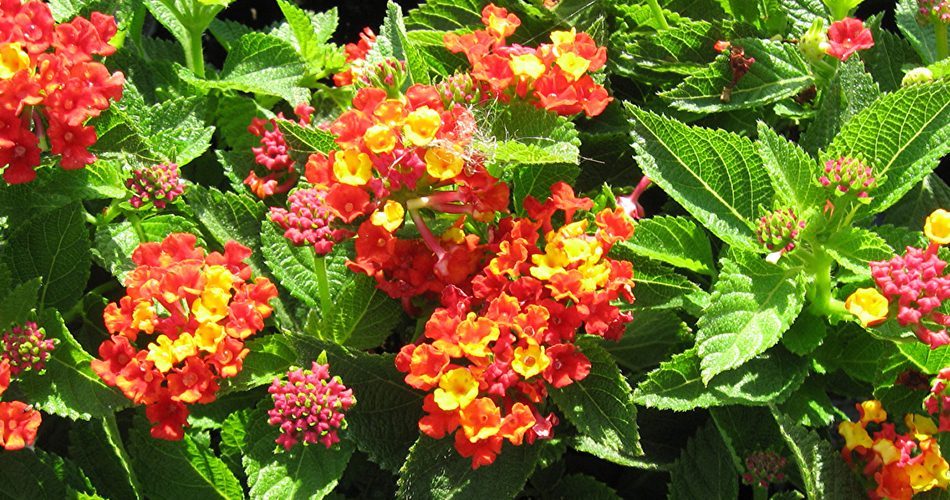Verbena (verbe’na). Because of their beautiful and often fragrant flowers, the garden verbena is popular as an annual garden plant.
The colors of the flowers range from pure white to rose-colored, carmine, violet, and purple. The flower clusters are commonly about two inches across and contain a dozen or more flowers each.
The genus Verbena has nearly 100 species that occur chiefly in tropical and subtropical America. About 20 are native to the United States, and a very few occur in Europe. The species grow somewhat like shrubs. The leaves grow opposite each other on the stems. While a number of the wild species of verbena are striking and attractive, others are inconspicuous weeds. The lemon-scented verbena of gardens, prized for the fragrance of its leaves, is not a true verbena. The sand verbenas of western North America belong to the same family as the four-o’clocks and are not related to the true verbenas. A few of the sand verbenas are used for borders and gardens with sunny exposures. The species are annual or perennial, with fragrant red, yellow, or white verbena like flowers, from which their name comes. The plants often occur in large masses in the deserts of western North America. When in flower during winter and spring they add an almost indescribable beauty to the landscape.
How to Grow Verbenas.
These plants are easily grown from seeds sown in flats or pans in February or March. As soon as the seedlings are up an inch they should be transferred to two-inch pots and kept in a cool, well lighted room until May. They can then be transplanted to the garden where they should be spaced about a foot apart.
If verbena plants are obtained from a florist or from a dealer in plants they usually will be in flower, and one can obtain the colors desired. Seeds may also be planted directly in the garden as soon as the season becomes settled and warm. The flowers will usually begin to bloom in July and continue until frost.


Be First to Comment